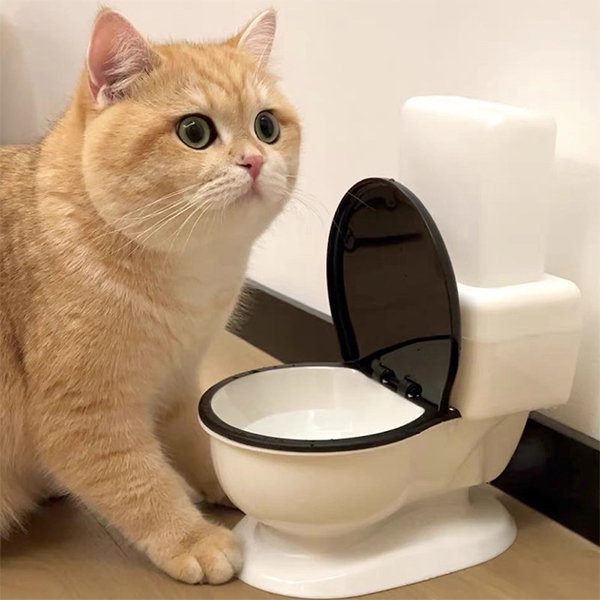Avoid Clogs and Damage: Don't Flush Cat Poop Down Your Toilet - Expert Insights
Avoid Clogs and Damage: Don't Flush Cat Poop Down Your Toilet - Expert Insights
Blog Article
What're your ideas about How to Dispose of Cat Poop and Litter Without Plastic Bags?

Introduction
As pet cat owners, it's vital to be mindful of just how we deal with our feline close friends' waste. While it may appear convenient to purge cat poop down the bathroom, this technique can have damaging consequences for both the atmosphere and human wellness.
Environmental Impact
Purging cat poop introduces unsafe pathogens and bloodsuckers right into the supply of water, posing a considerable threat to aquatic environments. These impurities can negatively affect aquatic life and concession water quality.
Health and wellness Risks
Along with environmental worries, purging cat waste can likewise present wellness risks to people. Feline feces might have Toxoplasma gondii, a parasite that can cause toxoplasmosis-- a possibly extreme illness, especially for expecting females and people with damaged immune systems.
Alternatives to Flushing
Thankfully, there are much safer and a lot more liable ways to get rid of feline poop. Think about the adhering to choices:
1. Scoop and Dispose in Trash
One of the most usual method of dealing with feline poop is to scoop it into a naturally degradable bag and throw it in the garbage. Make certain to make use of a committed clutter inside story and take care of the waste without delay.
2. Usage Biodegradable Litter
Go with eco-friendly pet cat clutter made from products such as corn or wheat. These clutters are eco-friendly and can be securely thrown away in the garbage.
3. Bury in the Yard
If you have a lawn, think about burying cat waste in a marked location far from veggie gardens and water sources. Be sure to dig deep enough to stop contamination of groundwater.
4. Mount a Pet Waste Disposal System
Purchase an animal waste disposal system specifically made for pet cat waste. These systems make use of enzymes to break down the waste, lowering smell and environmental impact.
Verdict
Liable family pet ownership expands past offering food and shelter-- it additionally includes appropriate waste administration. By refraining from purging feline poop down the toilet and going with alternate disposal methods, we can minimize our ecological footprint and shield human health and wellness.
Why Can’t I Flush Cat Poop?
It Spreads a Parasite
Cats are frequently infected with a parasite called toxoplasma gondii. The parasite causes an infection called toxoplasmosis. It is usually harmless to cats. The parasite only uses cat poop as a host for its eggs. Otherwise, the cat’s immune system usually keeps the infection at low enough levels to maintain its own health. But it does not stop the develop of eggs. These eggs are tiny and surprisingly tough. They may survive for a year before they begin to grow. But that’s the problem.
Our wastewater system is not designed to deal with toxoplasmosis eggs. Instead, most eggs will flush from your toilet into sewers and wastewater management plants. After the sewage is treated for many other harmful things in it, it is typically released into local rivers, lakes, or oceans. Here, the toxoplasmosis eggs can find new hosts, including starfish, crabs, otters, and many other wildlife. For many, this is a significant risk to their health. Toxoplasmosis can also end up infecting water sources that are important for agriculture, which means our deer, pigs, and sheep can get infected too.
Is There Risk to Humans?
There can be a risk to human life from flushing cat poop down the toilet. If you do so, the parasites from your cat’s poop can end up in shellfish, game animals, or livestock. If this meat is then served raw or undercooked, the people who eat it can get sick.
In fact, according to the CDC, 40 million people in the United States are infected with toxoplasma gondii. They get it from exposure to infected seafood, or from some kind of cat poop contamination, like drinking from a stream that is contaminated or touching anything that has come into contact with cat poop. That includes just cleaning a cat litter box.
Most people who get infected with these parasites will not develop any symptoms. However, for pregnant women or for those with compromised immune systems, the parasite can cause severe health problems.
How to Handle Cat Poop
The best way to handle cat poop is actually to clean the box more often. The eggs that the parasite sheds will not become active until one to five days after the cat poops. That means that if you clean daily, you’re much less likely to come into direct contact with infectious eggs.
That said, always dispose of cat poop in the garbage and not down the toilet. Wash your hands before and after you clean the litter box, and bring the bag of poop right outside to your garbage bins.
https://trenchlesssolutionsusa.com/why-cant-i-flush-cat-poop/

As a serious person who reads about How to Dispose of Cat Poop and Litter Without Plastic Bags, I think sharing that blog post was really useful. If you please set aside a second to promote this blog if you appreciated it. Thank-you for taking the time to read it.
Free Quote Report this page